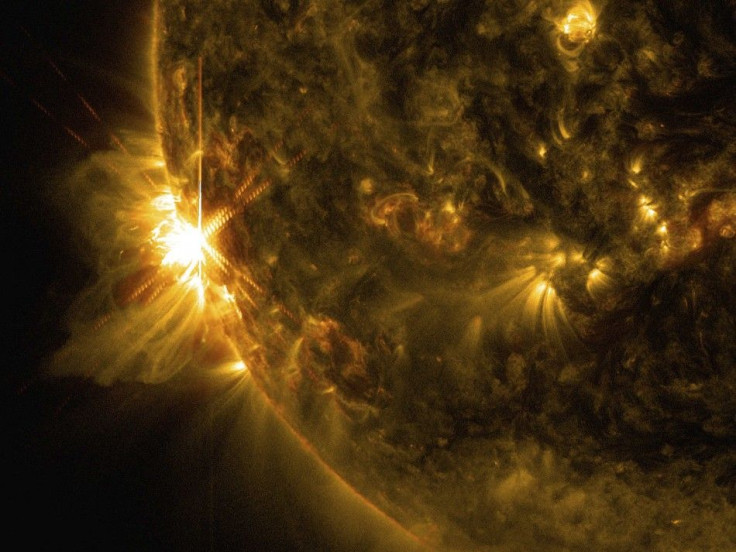Strong Solar Storm Heading for Earth
The Plus Side is That, it Would Expand the Photogenic Aurora Borealis Which are the Northern Lights

A "strong" solar flare is heading towards Earth. It could disturb the earth's power grid and the satellite and radio transmissions on Friday and Sunday. After several years, a solar storm of this size is coming from the middle of the sun. But it would not hit Earth and would just pass by.
Tom Berger, director of the Space Weather Prediction Center in Boulder, Colorado said that the sun flare does not hit the extreme on the forecaster's scale. He said that the "worst of the energetic particles," would not hit Earth and would only go north or above it. He bases these facts on the calculations of the satellite data.
The flare is classified as an "X-class" flare that means it is a highly powerful flare. USA Today reported that it is "at the high end of the solar flare scale."
Bill Murtagh, space weather forecaster for the National Oceanic and Atmospheric Administration said that they expect storm levels in the G2 and G3 range, which is a moderate and a strong range respectively. These storms can cause problems for power grids, but he said that these problems would be controllable. "We may also see some anomalies with satellites so satellite operators around the world have been notified. And problems with the accuracy of GPS have been observed with this level of storming," he added.
Though the flare would not hit Earth directly, as Berger stated, any additional eruptions in the next few days would cause more disturbances in our magnetic fields, Murtagh explained.
"There's been a giant magnetic explosion on the sun," Berger said. Since its moving towards the Earths direction, it's most likely that the highly energized particles and magnetic plasma would disrupt the Earth's magnetic sphere. This would cause temporary power grid problems, he added.
However, Berger said that there is also a nice side to it. It would expand the photogenic aurora borealis, which are the Northern Lights, across Canada and the northern U.S. People from the south could see it, but it would not be visible by those on the far south. "People in northern New England, the far northern Plains, and the Pacific Northwest should have the best views of the aurora," he said.
It would appear as shining green waves of light in the sky at night in polar attitudes. Some times they can be red or blue.
Watch the live stream of the solar flare here.




















